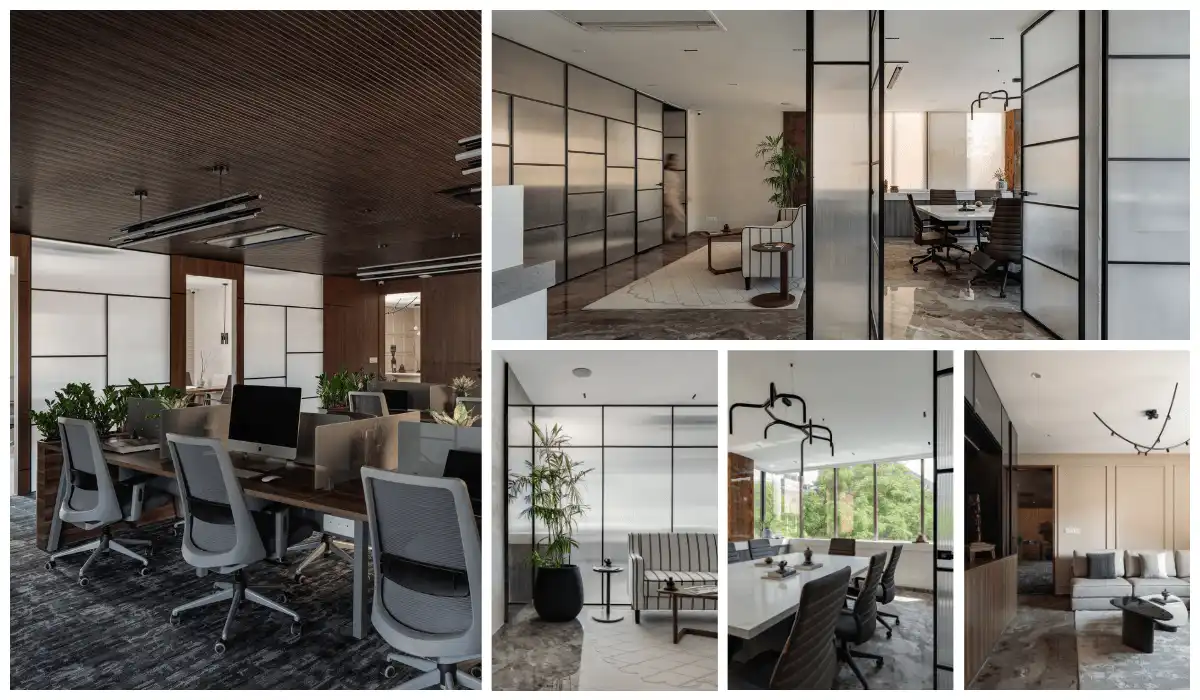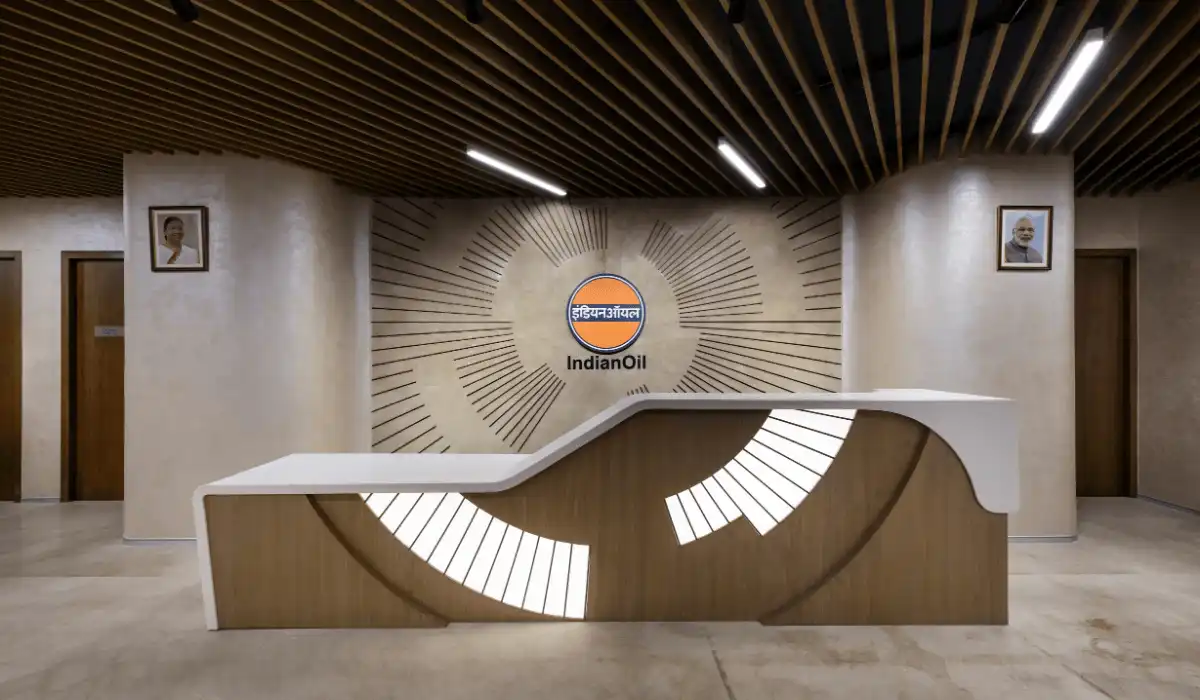Bibelot is an ode to culture. The team behind this beautiful abode is Open Atelier. Open Atelier, a multidisciplinary design studio based out of Mumbai, strives towards transforming urban lives. Founded by designer Rahul Mistri in 2010, the studio aims to craft spaces of experiential quality derived from a rooted understanding of how design affects lives as a result of urban necessities. Bibelot is a home designed by Parth Soni, Sanjana Goel, Mahesh Chalke. The house accommodates a family with diverse Jewish, Maharashtrian and Muslim roots. Professionally, one of them is a renowned celebrity and an event manager. Conjugating all their traits, the home narrates a story of urban lives by reflecting the identity of all its inhabitants, juxtaposing co-existing lifestyles harmoniously and serving as an ode to their rich and multi-faceted lineage. Each area and corner is unique, and each element is a well-thought-out marvel.
The Living Room
The 1,400 sq. ft. (ca. 130 sq. m.) apartment consists of a living room, kitchen with a utility area, a master bedroom and 2 additional bedrooms with attached bathrooms. The living room of this three-bedroom apartment is a cultural representation of the Maratha and Rajput design styles. The eye-catching orange jharokha, fitted with a mirror, adds depth and character to the space, complemented by earthy-toned furniture in deep green and browns. In contrast, the concrete floor is detailed intricately with a liquid metal to shape a striking flooring pattern that adds drama to the overall setting. Neutral tones of grey are used on the ceiling as well as the floor that allow the exquisite peacock painting mural to take the centre stage.

The Dining Space and Kitchen
A subtle flow of cultural language flows into the dining space, which dons an ornate dining table and a delicate console in orange hues. Classic black chairs with rattan bases complete the Retro meet Art Deco dining space with a solid textured grey wall, detailed with piping and cornices. The kitchen is a piece of art, a contrasting section with classic wooden cabinet shutters in a vibrant shade of green for the upper cabinetry and unique Warli art, a tribal art form of Maharashtra, carved on the surfaces of the lower shutters in stone finish milled on a CNC, thus standing out as an exquisite piece of art by itself. The kitchen has an embossed white subway tile back-splash that acts as a neutral buffer between the bold upper and lower cabinetry.

The Master Bedroom
Adapting another contrasting visual language and vocabulary, the master bedroom is an amalgamation of Art Deco and Bohemian design styles.
A playful collaboration of a vivid colour scheme, the master bedroom includes shades in poppy pink, egg whites and a delectable blue.
The hues are accentuated with cornice details, drop lamps and vein coding panels. The burnt orange, circular embedded ceiling sharply stands out. It adds a warm retro feel to the space while flamboyantly defragmenting the design language. Breaking the monotony solidity of the walls is the distinct capsule-shaped cut-out. It offers glimpses of the white and green shower tiles of the bathroom. The room is a loud personification of the inhabitant’s vibrant personality that is hard to miss and can be defined by one singular style.
The Other Rooms
The other rooms in the house tell another distinct story, one that is contemporary and rooted in organic style. The client’s daughter’s room is designed to incorporate an exposed ceiling adorned with textured concrete patterns. A detailed cornice runs along the edges and a rustic chandelier. One surface of the room is made up of wardrobes. These are made with polished timber shutters and rattan screens, sourced from the local market in Oshiwara.
Material Diversity
Materially, the home exhibits different experiments, all unique in character. However, the extraordinary ‘Top Flex’ flooring by Italian company San Marco steals the show. The micro concrete surface is unlike the more common IPS flooring which is glossy and prone to cracking. It is instead matte in effect and creates a distinctive character. On top of the concrete, liquid metal is seamlessly incorporated. This is to achieve eclectic patterns and motifs that run across the house. It thus basks it in an exquisite characteristic that creates visual impact.

The Design Philosophy
In its entirety, the collaboration with the gifted artist Rutuja Padwal effortlessly explains this home as an aesthetic oxymoron. It is a flux of experiences that cause a rush of different emotions. The power in her strokes and use of colour, for example, the vibrant orange, brings out the facets of the family members’ personalities. This was essentially the design intent. Moreover, an artistic perspective from Rutuja brings contrasting design styles together yet is fresh and imaginative.
Her personal touch renders the harmony and cohesively embraces every space to become a haven for united living.
The house accommodates a family with diverse Jewish, Maharashtrian and Muslim roots. Conjugating all the traits, the home narrates urban lives by reflecting the identity of all its inhabitants, juxtaposing co-existing styles harmoniously and serving as an ode to their rich and multi-faceted lineage.
Open Atelier Mumbai
Website : www.openateliermumbai.com
Photo Credits: Mr. Prashant Bhat
Discover more from Biltrax Media, A Biltrax Group venture
Subscribe to get the latest posts sent to your email.































